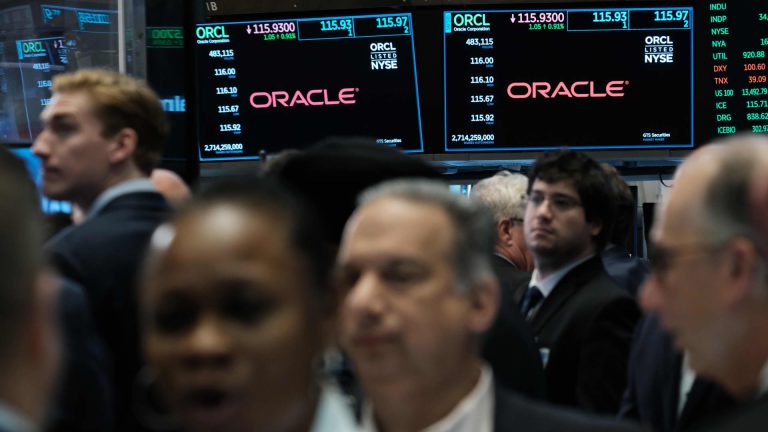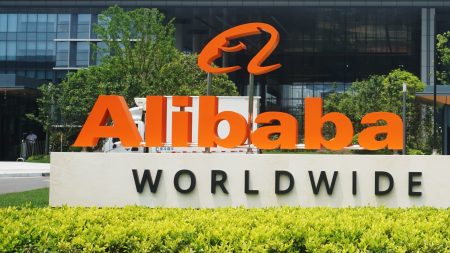In an up-and-down market since our July Monthly Meeting, we added two stocks to our portfolio: an industrial name and an emerging cloud play. Jim Cramer and I talked about why we like these companies during our August Monthly Meeting on Thursday. Here are the highlights and our recommendations. Oracle (ORCL) and DuPont (DD) are the new stocks, and we consider both of them buys, as indicated by our 1 rating on each. ORCL YTD mountain Oracle YTD performance We initiated our Oracle position on Tuesday. The business software giant is emerging as a cloud infrastructure name that has really come on as of late. For years, Oracle lagged behind the likes of Amazon Web Services, Azure, and Google Cloud, but the company hit a turning point when it launched its second-generation cloud infrastructure offering, called Oracle Cloud Infrastructure Generation 2, or OCI Gen 2, in the summer of 2020. Oracle says it’s faster, cheaper and more secure than the competition. Remember in the cloud, customers get charged by the minute. If you run twice as fast, you only have to pay half as much. Sometimes, Oracle runs even faster, so just think of the cost savings for its customers. With the launch of OCI Gen 2, the pitch Oracle can now make is that the company can serve all of a customer’s needs, with competitive offerings in both cloud applications and cloud infrastructure. With its longstanding dominance in on-premises infrastructure, it can also accommodate those who want more flexible models, like hybrid cloud offerings. While all the cloud infrastructure plays have been putting up big numbers for years, what the market is trying to figure out now is which one is the best for running generative AI workloads. This is the next big opportunity that’s only just getting started. As of last June, Oracle’s generative AI cloud customers had signed contracts to purchase more than $2 billion of capacity in the Gen 2 Cloud. Nvidia (NVDA) is developing AI on the Gen2 Cloud, and has partnered with Oracle to build the world’s largest high-performance computer and AI computer with 16,000 graphics processing units (GPUs). Oracle has been posting strong cloud results for the past year, but its latest quarter was such a standout. Total cloud revenue growth surged to 54%, with 45% growth for Cloud Applications and 76% growth for Cloud Infrastructure. Management also gave a strong forecast for its fiscal first quarter of 2024 due to the “unprecedented demand for our cloud services and especially our AI services.” The company expects cloud revenue, excluding contributions from its Cerner acquisition, will continue growing at least at a similar rate to what it experienced in fiscal 2023. And, as its high-growth cloud revenues become a larger portion of the total business, Oracle should see an acceleration in total revenue growth in fiscal 2024. One of the great parts of the Oracle story is that investors are paying for this growth at a very reasonable price. Oracle currently trades at around 20.5x the $5.59 analysts expect it to earn in its fiscal 2024. Those earnings are expected to grow about 13% to $6.31 for fiscal 2025. Let’s compare that to Microsoft. It trades at about 29 times the $11.02 per share that that company is expected to earn in its fiscal 2024. Those earnings are expected to grow about 15% to $12.72 for fiscal 2025. I’m not suggesting Oracle and Microsoft (MSFT) should trade at parity, but you are paying for nearly the same amount of growth at a discounted multiple. Plus, Oracle pays a dividend that yields about 1.2% and that’s more than you’ll get from other cloud players. Those who have caught on to Oracle’s increasingly competitive offerings in the cloud and its AI momentum have now caught a huge gain, but that doesn’t mean the run is over from here. With the stock down about 10% from its peak in mid-June, we want to reiterate that the recent pullback is an attractive one to buy into. DD YTD mountain DuPont YTD performance We called up the latter from the Bullpen on July 22. The specialty chemical company is run by the legendary deal maker Ed Breen. What got us interested in this name is that it’s a cheap, industrial way to capitalize on the recovery in the semiconductor and electronics industries without paying a typically higher chip-stock multiple. With interest rates on the rise and the Federal Reserve expected to stay higher for longer, multiples must be scrutinized. DuPont said on its second-quarter earnings conference call that the bottom in its semi-business is here, making for an attractive growth story in 2024 as we see a rebound in electronic sales. The business is at the bottom of what should be a new multiyear cycle of growth. While the chip recovery may not be exactly be in a straight line up due to the ongoing uncertainty in China, DuPont already tempered its outlook for the second half of the year to reflect weakness in the region. So, the guide is already de-risked around the headlines we are seeing. You can’t talk about DuPont with talking about capital returns. The company has been sitting on excess cash ever since it sold its Mobility & Material (M & M) business last year for $11 billion but terminated its $5.2 billion deal to buy Rogers Corporation (ROG) due to regulatory issues. With the extra cash on hand, DuPont cleaned up its balance and has been aggressively repurchasing stock. DuPont is nearing the end of a $3.25 billion accelerated share repurchase program they announced right after the Rogers deal broke. Shortly after this is completed, DuPont will announce a new $2 billion ASR. Accelerated share repurchase programs are a quick way for a company to retire stock to boost earnings-per-share, and they also can be a sign that management thinks the stock is undervalued — it’s why they want to swoop in and aggressively buy back stock. On valuation, Dupont has been trading at a discount to other multi-industry companies for such a long time but we think the time is right to re-rate higher. In the years after DuPont separated from DowDuPont, Ed Breen has been reshaping its portfolio, selling out of its commodity-linked businesses and buying up other companies with stronger, less cyclical growth outlooks, especially in electronics. This transition out of boom-bust cycles to stable growth is deserving of a higher multiple. (Jim Cramer’s Charitable Trust is long DD, ORCL, NVDA, MSFT. See here for a full list of the stocks.) As a subscriber to the CNBC Investing Club with Jim Cramer, you will receive a trade alert before Jim makes a trade. Jim waits 45 minutes after sending a trade alert before buying or selling a stock in his charitable trust’s portfolio. If Jim has talked about a stock on CNBC TV, he waits 72 hours after issuing the trade alert before executing the trade. THE ABOVE INVESTING CLUB INFORMATION IS SUBJECT TO OUR TERMS AND CONDITIONS AND PRIVACY POLICY , TOGETHER WITH OUR DISCLAIMER . NO FIDUCIARY OBLIGATION OR DUTY EXISTS, OR IS CREATED, BY VIRTUE OF YOUR RECEIPT OF ANY INFORMATION PROVIDED IN CONNECTION WITH THE INVESTING CLUB. NO SPECIFIC OUTCOME OR PROFIT IS GUARANTEED.
In an up-and-down market since our July Monthly Meeting, we added two stocks to our portfolio: an industrial name and an emerging cloud play. Jim Cramer and I talked about why we like these companies during our August Monthly Meeting on Thursday. Here are the highlights and our recommendations.
Read the full article here









